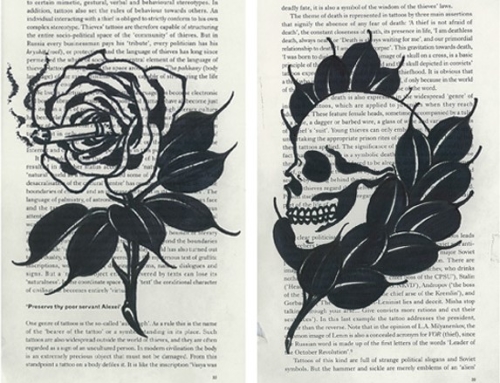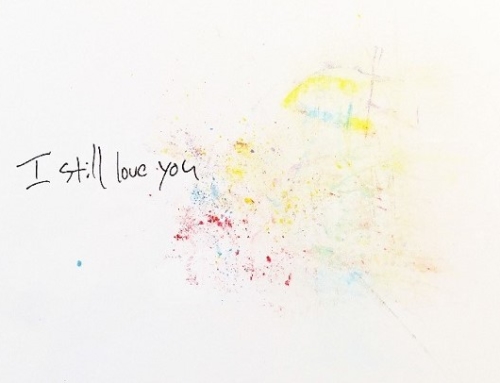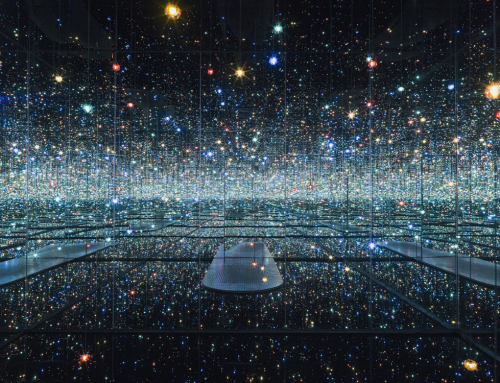Stuart Semple wants you to know you live in the world of Pop — a society defined by an inflamed consumer culture, with a façade glamorous in its hyper-reality, encased in a climate of fear and grotesque violence.
Like his predecessors, Warhol, Basquiat, and Koons, Semple’s body of work is a streaming public service announcement. It intends to scratch away the veneer of contemporary society so to impel the masses to generate their own unique impressions of the dominant ideology that intrinsically guides them.
An artist of infamous wit and wisdom, Semple’s illustrious career has corroborated the words painted across the canvas he once infamously smuggled into London’s Saatchi Gallery as a retort to Charles Saatchi’s pronouncement that the YBA (Young British Artists) “will be a footnote” in the history of art. “British Painting Still Rocks,” was Semple’s cheeky edict.
At the forefront of the new generation’s debate with modern social mores, Semple’s edict is more than a declaration; it is the raison d’être emboldening a movement.
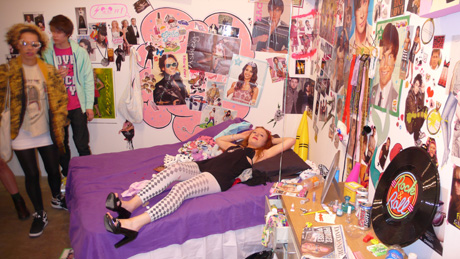
Teen Dream Chaos © Stuart Semple / Ju$t Another Rich Kid
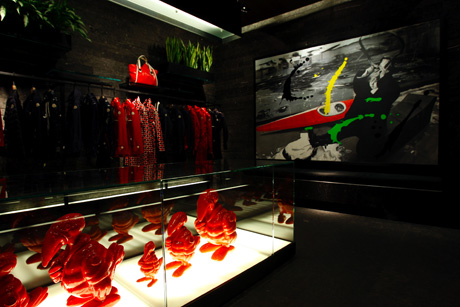
Moncler Boutique
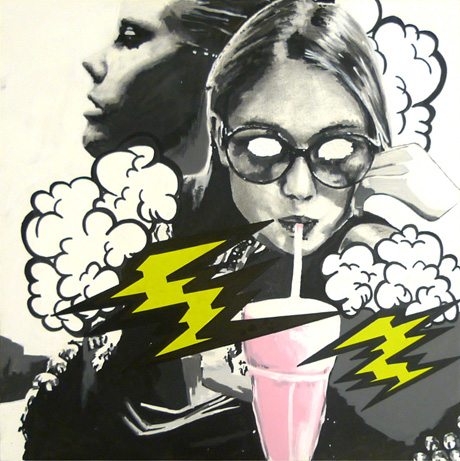
Forever Young mixed media on canvas 75 x 75 x 5 cm © Stuart Semple Industries 2009
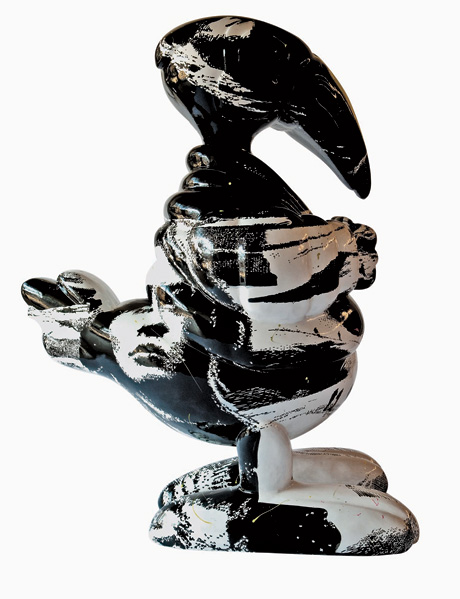
Moncler TOY © Enzo Barracco for Moncler
What about popular culture appeals to you as an artist?
I’m not sure it’s about a specific thing or aspect; I think when I was young, in the 80s, there was a genuine sense of excitement about the music and movies that were coming through.
And things have changed?
Now, I just find the whole environment is different, everything is pop, it becomes the parameter. I think each of us has quite a bespoke experience of that, but what’s been getting to me about it lately, or inspiring me, is the difference between the emotional sensation felt and what mass culture promises. I love the way it looks and sounds, but at its heart it’s a lie.
Is pop culture something you have always been an observer of?
I think so, not that I knew it specifically in those terms. I have early memories of music albums and ad campaigns, and news snippets. Madonna on MTV. Cyndi Lauper in the Goonies. I think I was consuming it more than observing it at that stage, though.
Do you see the pop culture you examine through your art as being distinctly British?
No, I don’t think so. Actually in the early days what excited me most was the American stuff, their pop stars and the Spielberg movies. Britain was pretty bleak in the 80s, the recession was just depressing, unemployment. The world around me wasn’t very energized. Then this stuff comes in from America: Madonna sings “Holiday”, and Michael J. Fox takes the day off school and grabs the back of his car to skateboard around. It just made me feel great. There was that aspirational American dream that really seemed to give me some sort of hope. In the U.K. there was a real frowning on Americanization, when McDonalds came, and [with] music videos and stuff. The older generation looked down on that, like U.S. TV could rot our brains.
You’re something of an anthropologist in the way you examine, sometimes even expose, social-cultural phenomenon.
I suppose that could be a way to describe it. I feel more just like an artist really. I try my best to describe the environment around me, to reproduce it truthfully but also to show a feeling of that experience. It’s that simple, it’s a very direct thing. It feels more emotive than that.
You’ve been labeled a post-Pop artist. What does it mean to be “post-Pop?”
I’m not sure, really. Well, it’s probably to do with art history, isn’t it? Because people like to define “Pop Art” as a specific movement grounded in a certain moment in time. So an artist dealing with popular culture outside that period would be post-Pop.
Is it really that simple?
I’m not convinced that Pop Art was ever as clearly defined as a movement as people think, because it was more global than the short artists list in the books portray. I mean, there was all that amazing critical stuff coming out of Spain that they don’t teach you about at school. I’m also not so convinced it really ended at all, some of those guys are still very much alive and still doing their thing. I think what it comes down to at the end of the day is work that criticizes popular culture and, on the other hand, work that celebrates it. The celebratory stuff can be consumed as items within Pop, so we can buy a Murakami toy just like a Barbie doll, whereas Hamilton is still making us think about what it feels like to live in a Modern society.
Is “Pop” still alive then?
I think we’re still in “Pop,” and if anything we’re getting more and more into “Pop,” it’s expanding like an uncontrollable virus.
Are you one for labels like “post-Pop?”
Not really. You can find a million terms to try to describe something. Art’s just art and it’s doing pretty much what it always did.








